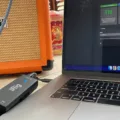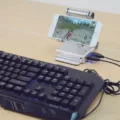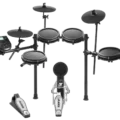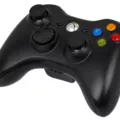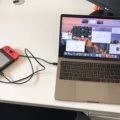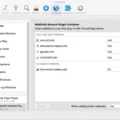Connecting a keyboard to a MacBook is an easy process. It can be done in just a few steps and the user will be able to enjoy the convenience and increased productivity of having a physical keyboard to work with.
A Keyboard is an essential input device for a computer system. It is used for typing text, entering commands, and controlling the cursor on a screen. Most keyboards are designed to plug into computers via USB ports, making them easy to connect and use.
To connect a keyboard to your MacBook, first locate the USB port on your laptop. This will typically be located on either side of the laptop or near where you plug in your power cord. Once you have found the port, insert the USB cable from your keyboard into the port.
Once the cable is securely connected, turn on your laptop and alow it to recognize and install any necessary drivers for your keyboard. This process may take several minutes depending on how powerful your computer is or how many devices you have already connected to it. Once this process is finished, you should be ready to use your keyboard with your MacBook.
Using an external keyboard with your MacBook can provide many advantages over relying solely on its built-in keyboard. An external keyboard allows users more precision when typing as well as increased comfort since they don’t need to hunch over their laptop keyboards as much. It also makes using shortcuts easier as users can now access all of their favorite key commands at their fingertips without having to search through menus or memorize keystrokes like they would if they were using their laptop’s built-in keys alone.
In conclusion, connecting a Keyboard to a Macbook is an easy process that can open up new possibilities for users in terms of productivity and comfort whle working on their computers. With just a few simple steps and some patience while waiting for drivers to be installed, users can enjoy all of the benefits that come along with having an external physical Keyboard connected to their laptops!
Getting Mac to Recognize Keyboard
To get your Mac to recognize your keyboard, you will need to make sure it is set up properly. First, open the Apple menu and select System Preferences. Then click on Keyboard and then Input Sources. Make sure the checkbox next to “Show Input menu in menu bar” is selected. This will add an icon to your menu bar that looks like a flag. Click on this icon and make sure the desired keyboard layout is selected. Your Mac should now be recognizing your keyboard properly.

Source: dell.com
Troubleshooting a Non-Functioning Mac Keyboard
If your Mac keyboard is not connecting, there could be a few different causes. First, check the cable and make sure it’s securely connected to both the keyboard and your Mac. If you’re using a wireless keyboard, check that its batteries are charged, or if you’re using an Apple Magic Keyboard, ensure it has been correctly charged. You may also need to try switching ports on your Mac or using a different USB cable. If thse options don’t work, it might be worth trying to reset your Bluetooth settings or use a Bluetooth scanner to see if the keyboard is appearing in the list of available devices.
Reconnecting a Wireless Keyboard to a Mac
To reconnect your wireless keyboard to your Mac, follow thee steps:
1. On your Mac, open the Bluetooth menu by clicking on the Bluetooth icon in the top-right corner of your screen.
2. Select Turn Bluetooth On to enable Bluetooth on your Mac.
3. Click on Bluetooth > Set up Bluetooth Device and then choose Keyboard from the list of devices.
4. Hold the keyboard within 5 inches of the Mac screen and click Continue.
5. Type in the number that appears onscreen to pair the keyboard with your Mac.
6. Once you have done this, click Continue to return to the desktop and start using your wireless keyboard with your Mac!
Troubleshooting Wired Keyboard Connection Issues on Mac
There are several possible reasons why your wired keyboard might not be connecting to your Mac. First, check the USB connections on both the keyboard and your Mac to make sure everything is plugged in securely. If that doesn’t work, try switching the keyboard’s cable to another USB port on the same Mac. You should also unplug the keyboard and replug it in firmly and securely. Finally, ensure thee is nothing obstructing the connection in the USB port, such as debris or dirt. If there is, try to remove it.
Making a Keyboard Discoverable
To make your keyboard discoverable, you will need to turn on Bluetooth on the device you want to pair with the keyboard. On a Mac, open System Preferences, choose Keyboard, and click Set Up Bluetooth Keyboard. In iOS or Android settings, turn on Bluetooth. On Windows devices, open Control Panel and select Add a Device. Once you have done this, your device should display a passcode and a countdown timer; you will need to type in the numeric code from the keyboard within that time frame in order to successfully pair them together.
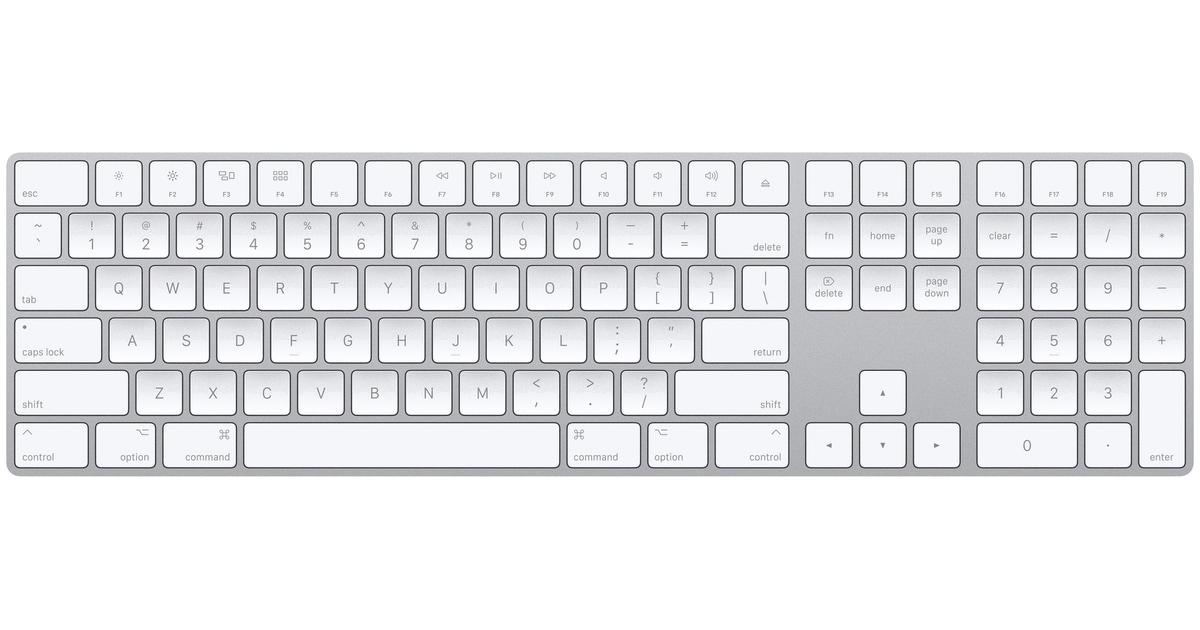
Source: apple.com
Setting Up an External Keyboard on a Mac
To set up an external keyboard on your Mac, you’ll first need to open the System Preferences. To do this, click the Apple logo in the top-left corner of your screen, then select System Preferences.
Once you’re in the System Preferences menu, choose Keyboard, Mouse, or Trackpad. If you’re setting up a mouse or trackpad, follow the onscreen instructions. However, if you’re setting up a keyboard you’ll need to click Set Up Bluetooth Keyboard beore proceeding.
You’ll then be presented with a list of available Bluetooth devices; select your external keyboard from this list and click Connect. Your Mac will then attempt to pair with your keyboard – if successful, it should now be ready to use!
Troubleshooting a Non-Connecting Wireless Keyboard
It sounds like your wireless keyboard is not connecting becase the batteries need to be changed. Wireless keyboards and mice require batteries to power them and they can lose their connection if the batteries become too low. To reconnect, try replacing the batteries in both the keyboard and mouse and then press the reconnect button on both the wireless receiver and on the keyboard/mouse. If this does not work, you may need to reinstall or update your device’s drivers.
Troubleshooting Mac’s Inability to Connect to Bluetooth Keyboard
There are several reasons why your Mac may not be able to find your Bluetooth keyboard. First, make sure that the keyboard is turned on and within range of your Mac. If the keyboard is not in range, then it won’t be able to connect. Additionally, make sure that Bluetooth is turned on and that your Mac can detect other Bluetooth devices. If the Bluetooth menu bar icon does not appear or if the status continues to indicte that Bluetooth is off, restart your computer and then try to turn Bluetooth on again. Finally, if you’re having trouble connecting a specific device to your Mac, check the manufacturer’s website for updated drivers or instructions.
Troubleshooting Issues with USB Keyboard Functionality
It is possible that your USB keyboard is not working due to a hardware issue. There are a few steps you can take to troubleshoot the problem. First, verify that the keyboard is securely plugged into the USB port. If it is, try disconnecting and reconnecting it to the same port. If you have a USB keyboard, try plugging it into a different USB port as well. Additionally, make sure there are no other devices plugged into the same USB hub as your keyboard, as this can cause conflicts. If thse steps do not work, you may need to replace your keyboard or contact technical support for assistance.
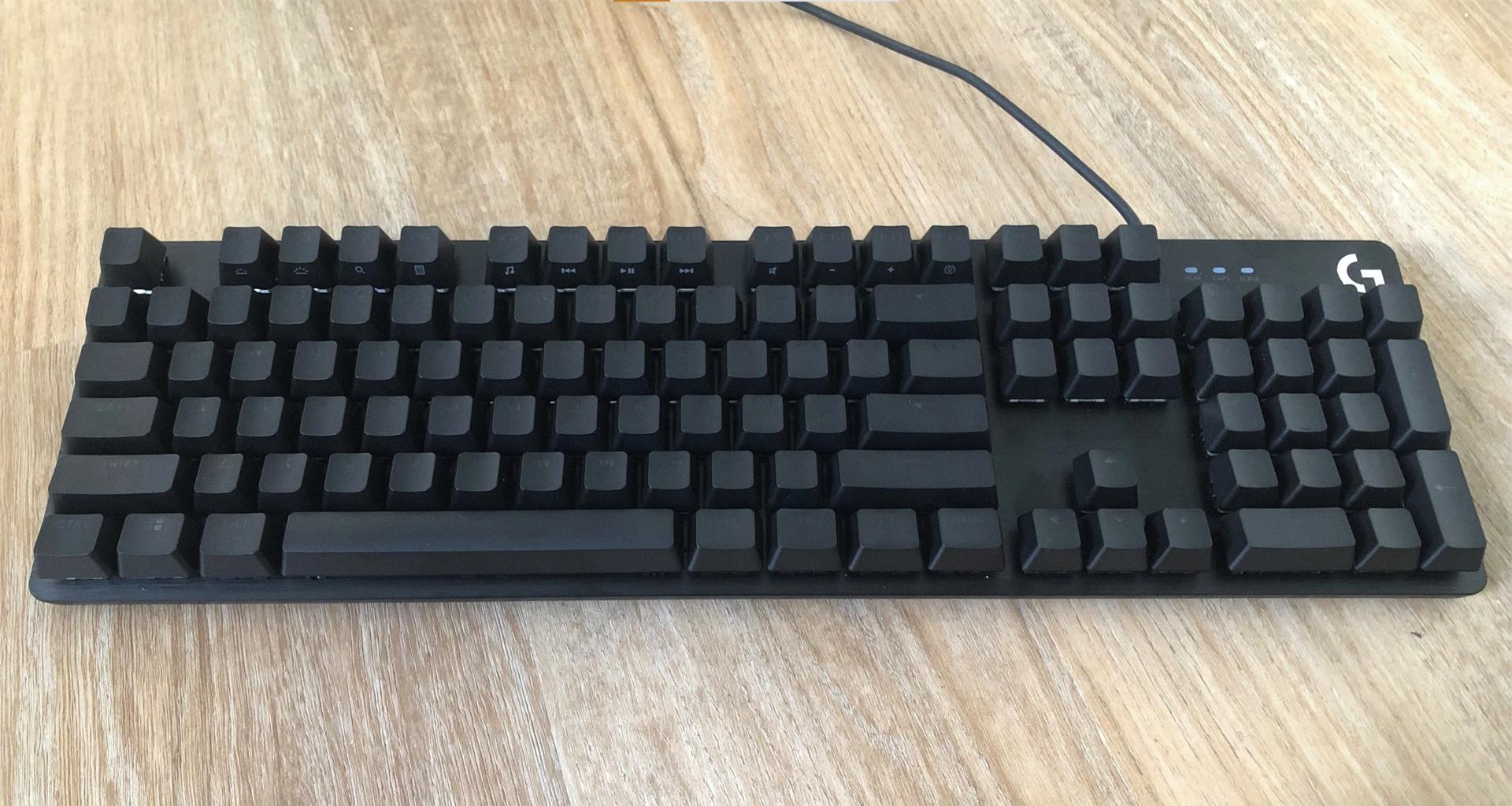
Source: arstechnica.com
Troubleshooting Issues with Wired Keyboard Connection
It’s possible that the wired keyboard is not connecting to your computer due to a connection issue. To troubleshoot, first turn on the computer, then reconnect the keyboard and make sure it is securely connected. If the keyboard has a USB connector, try using a port directly on the computer raher than a USB hub, and if that doesn’t work, try another port. It’s also possible that there is an issue with the keyboard itself or with its internal circuitry. In this case, you may need to replace the keyboard or have it serviced by a qualified technician.
Resetting a Mac Wireless Keyboard
To reset your Mac wireless keyboard, you’ll need to open the Bluetooth menu. To do this, hold down the Shift and Option keys (‘Alt’ on some keyboards) at the same time, then click on the Bluetooth icon in the menu bar. Once the menu is showing, release the keys. From the Bluetooth menu, choose Debug > Remove All Devices. This will remove all of your previously paired devices.
Once this is done, you’ll need to reboot your Mac to complete the reset process. After rebooting, you can setup your keyboard and/or mouse as normal by going to System Preferences > Bluetooth and clicking ‘Set Up New Device’. Follow any instructions that appear onscreen and you shold be able to pair your device successfully.
Syncing a Wireless Keyboard to a Computer
To sync your wireless keyboard with your computer, you’ll need to first insert the battery into the wireless keyboard. Then, plug in the unifying receiver into an available USB port on your computer. Turn on the wireless keyboard and wait for it to pair with your PC. Once it has been successfully paired you can test out the wireless keyboard by typing on it.
Connecting a Wireless Keyboard to a Mac Without a Mouse
To connect a wireless keyboard to your Mac without a mouse, you must first ensure that Bluetooth is enabled on your Mac. To do so, hold the Command (?) key then press the spacebar to open Spotlight Search. Type Bluetooth then use your keyboard’s arrow keys to highlight Bluetooth File Exchange. Press the enter or return key to open it. Your Mac will recognize if Bluetooth is disabled and ask if you want to reenable it.
Once Bluetooth is enabled, turn on your wireless keyboard and make sure it is in discoverable mode. The specific steps for this may vary depending on your keyboard model. Once complete, go back to the main screen of the Bluetooth File Exchange window and click “Set Up New Device”. A list of nearby discoverable devices shuld appear in the window; select your wireless keyboard from this list and follow any on-screen instructions until you have successfully connected it to your Mac.
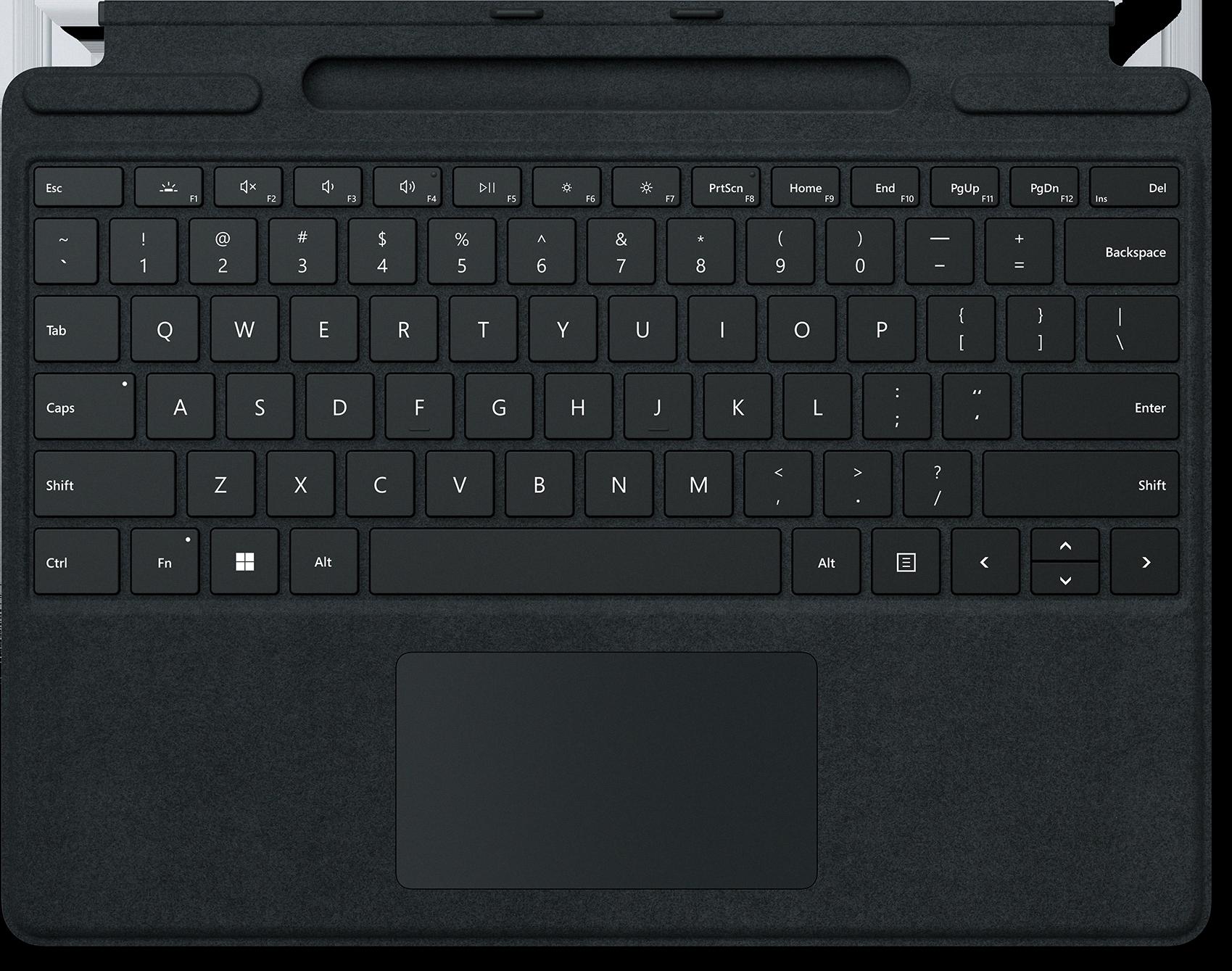
Source: microsoft.com
Connecting a Normal Keyboard to a Mac
Yes, you can connect a normal keyboard to your Mac. All USB or Bluetooth keyboards (including wireless keyboards with a USB dongle) are compatible with Macs. Just plug the keyboard into your Mac’s USB port or connect it via Bluetooth, and you’re ready to type away! Some keyboards may require you to install any neessary drivers before they will work properly with your Mac. For more information on installing and using a keyboard with your Mac, please refer to the documentation that came with the keyboard or visit Apple’s website for more instructions.
Connecting a Wired Keyboard to a MacBook Air
To connect a wired keyboard to your MacBook Air, you will need a USB port. Plug the keyboard into the USB port on your computer and it should be automatically recognized by the operating system. Depending on your version of macOS, you may need to go to System Preferences > Keyboard > Input Sources to select the approprite language for your keyboard. Once this is done, you should be able to type on the keyboard normally.
Using an External Keyboard with a MacBook Pro
Yes, you can use an external keyboard with your MacBook Pro. External keyboards come in both wired and wireless varieties, so you can choose the option that best suits your needs. Wired keyboards are usually cheaper and more reliable, while wireless keyboards are often more convenient to use and don’t require any cables. Depending on the type of keyboard you choose, you may need to purchase an adapter or dongle to connect it to your laptop. Additionally, if you opt for a third-party keyboard, make sure it is compatible with your MacBook Pro before purchasing.
Troubleshooting Issues with Bluetooth Keyboard Connection
It is possible that your Bluetooth keyboard is not connecting because the batteries in the device are dead or low, or if it uses another power source, the power source is no longer providing adequate power to the device. In addition, it is possible that tere are compatibility issues between your computer’s Bluetooth capabilities and the Bluetooth keyboard. Lastly, make sure that your computer’s Bluetooth settings are correctly configured to recognize your keyboard.
Resetting a Wireless Keyboard
To reset your wireless keyboard, first turn off the keyboard. Then, while holding down the Escape (ESC) key, turn the keyboard back on. Keep holding down the ESC key for about 5 seconds until you see the keyboard lights flash – this indicates that the reset was successful.
Connecting a Wireless Keyboard Without USB Receiver
To connect a wireless keyboard without a USB receiver, you will need to use Bluetooth. First, make sure that the keyboard is turned on and set to pair mode. Then, turn on your PC and go to the Bluetooth settings. Click “Add Device” and select “Bluetooth” from the list. Your wireless keyboard shold appear, so click it to connect. Once connected, you can start using your keyboard with your PC.
Finding a Bluetooth Keyboard on a Mac
To find a Bluetooth keyboard on your Mac, first make sure the device is turned on and discoverable (see the device’s documentation for details). Then, open System Preferences and click Bluetooth. You should see a list of available devices. Look for the one you want to connect and select it, then click Connect. That’s it! Your Mac should now be connected to the Bluetooth keyboard.
Enabling a USB Keyboard
Enabling USB keyboard support is a relatively simple process. First, reboot your computer and enter the BIOS setup menu by pressing a designated key (usually F2, F10, or Del). Once there, navigate to the Integrated Peripherals menu and look for an option labeled USB Keyboard Support. Enable the option if it is disabled, then save your changes and exit the BIOS. Your computer shuld now recognize any USB keyboards connected to it.
Troubleshooting Keyboard Recognition Issues
It’s possible that your keyboard isn’t being recognized because the correct keyboard drivers are missing or outdated. To solve this, ensure that your device has the most up-to-date drivers installed. You can do this by visiting the manufacturer’s website and downloading the latest driver for your specific model. Additionally, check to make sure that you’re using the correct USB port for your keyboard. If you’re sill having issues, it could be a sign of a damaged USB port that needs to be replaced.
Troubleshooting Issues with a New Keyboard
If your new keyboard is not working when plugged into your computer, it could be a sign of a hardware issue. To narrow down the potential causes, first make sure that the keyboard is correctly connected to the USB port and that it is securely plugged in. If you’re using a USB hub or adapter, try connecting the keyboard directly to your computer’s USB port instead. Additionally, you can try using a different USB port on your computer if available. It could also be possible that the USB port itself is faulty or has become loose due to wear and tear over time. If none of these solutions work, it may be worth consiering replacing the keyboard or having it serviced by an authorized technician.
Setting Up a Wired Keyboard
To set up a wired keyboard, you will need a USB A to B cable. Start by plugging the USB B end of the cable (which is square-ish in shape) into the USB port on your keyboard. Then plug the USB A end of the cable into your computer. Next, launch Playground and begin going through the setup prompts. Finally, click on Next and complete the set up. Once complete, your wired keyboard should be ready to use!
Conclusion
The Keyboard is an essential tool for any computer user. It is a great way to input data and commands quickly and accurately, enabling users to interact with their computer in a more efficient manner. The keyboard offers a wide range of features, such as customization options, multimedia keys, adjustable lighting, and more. With the right keyboard, users can take their computing experience to the next level. Whether you need a basic keyboard or smething more advanced, there is one available to fit your needs. The keyboard is an important part of any modern computing setup and should not be overlooked.

